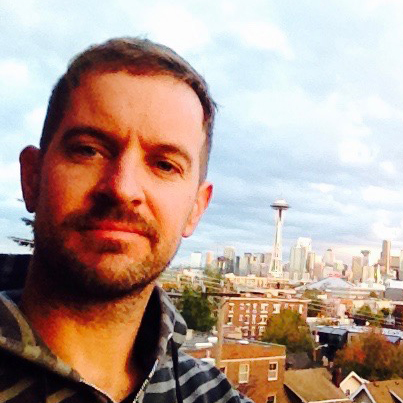Fishing all but wrapped up in Bristol Bay, Alaska this week, capping what could shake out to be the most lucrative season in 126 years of recorded history in the world’s largest sockeye salmon fishery.
When the Alaska Department of Fish and Game (ADFG) published its final daily run summary of the season on 31 July, the total salmon harvest sat at just over 43 million fish on a run of 56.3 million. Sockeye salmon constituted over 42 million of the fish caught and Icicle Seafoods announced on 7 July a base ex-vessel price of USD 1.35 (EUR 1.20) per pound for the species.
Fishermen in Bristol Bay often do not know how much they will be paid for their catch until fishing is winding down, but Joel Zarate, Icicle’s fleet manager for Western Alaska, said the processor wanted to post early as a show of solidarity to its fleet.
“We came out first because we are committed to our fleet and we want to support them and come out strong. We want to let them know they’re fishing for a company that cares about them. I think that’s what our message was,” Zarate told SeafoodSource, adding that it has been several years since Icicle was the first to announce their buying price in Bristol Bay. Beyond the base rate, Icicle fishermen stood to earn incentives of USD 0.15 (EUR 0.13) a pound for cold fish on either ice or in refrigerated sea water (RSW), USD 0.08 (EUR 0.07) for bleeding, and USD 0.05 (EUR 0.04) for floating, with all incentives adding up to USD 1.63 (EUR 1.45) a pound.
As often happens, other major processors followed the initial announcement, with Leader Creek Fisheries, Peter Pan Seafoods, Alaska General Seafoods, and North Pacific Seafoods all publishing the same USD 1.35 base rate.
Prices have been bolstered in Bristol Bay in recent years, in part because of a fishery-wide push for higher-quality fish destined for a robust wild fillet market.
“We’re really happy with what we’re seeing in terms of quality. We went a little harder at the bleeding program this year and we’re closing in a complete RSW fleet. We just want to make sure that fish gets in cold water and is taken care of and overall the fleet did a good job of it,” Zarate said.
This season’s total run came up short of 2018’s all-time record of 62.3 million sockeye, but fisherman were able to catch a higher percentage of the total run, with all districts still easily reaching their escapement goals. Final figures will not be available for months, but it stands to reason that the higher catch and higher base should eclipse last year’s record-breaking ex-vessel price of USD 281 million (EUR 250.7 million) for all salmon species.
Tim Sands, the area management biologist for the Nushagak and Togiak districts, said the Nushagak district clocked in with the second-biggest harvest on the third-biggest run of all time.
“Things went well. We harvested a far higher percentage of the fish this year. We didn’t have as many as the big ocean fish this year, but the fishermen have dialed down their gear to catch those smaller fish,” Sands told SeafoodSource.
Sands added that a string of uncharacteristically warm, calm weather made for easier fishing, which equated to easier management.
“The lack of [bad] weather just allows us to be more efficient. In 2017, we had a total run of 20 million and we only caught 12 million. This year we only had 18 million but caught 14 [million] of them,” Sands added.
At Seattle, Washington’s iconic Pike Place Fish Market, where tourists gather to watch boisterous fishmongers toss fillets back and forth, wild-caught Alaska sockeye salmon priced out at USD 12.99 (EUR 11.59) a pound, while fat wild-caught Alaska king fillets went for USD 19.99 (EUR 17.83) per pound. Pike Place Fish Market’s online prices were considerably more expensive, with sockeye fillets listed at USD 21.99 (EUR 19.61) a pound and headed sockeye going for USD 47.96 (EUR 42.78) per fish. Whole Pacific king salmon with the head on was listed at USD 19.99 (EUR 17.83) per pound, while king fillets went for USD 33.99 (EUR 30.33) a pound.
Around the corner in Pike Place Market at a smaller, less flamboyant stand, scrawnier fillets also labeled as Alaska wild-caught sockeye sold for USD 8.49 (EUR 7.57) a pound, and a reader board at a QFC in south Seattle advertised Alaska sockeye at USD 11.99 (EUR 10.70) a pound.
Despite the bumper season, there are question marks about Bristol Bay’s future. Last week, the Environmental Protection Agency stripped protections for the region’s watershed put in place by the Obama administration, opening the door for a massive gold and copper mine near the headwaters of the fishery’s most productive river system.
Meanwhile, high air and water temperatures caused by climate change had many concerned. While the runs were large, nearly all the fishery’s river systems experienced large upriver die-offs of adult salmon, which biologists attributed to a lack of oxygen in the warm rivers.
Jordan Head, ADF&G’s assistant area management biologist to Sands, said the Igushik River registered at 24 degrees Celsius (75 degrees Fahrenheit) this summer. Head showed video that he had taken up the Igushik River of the banks of the river lined with dead sockeye, which he estimated topped 100,000 fish.
Photo courtesy of Steve Estvanik/Shutterstock







